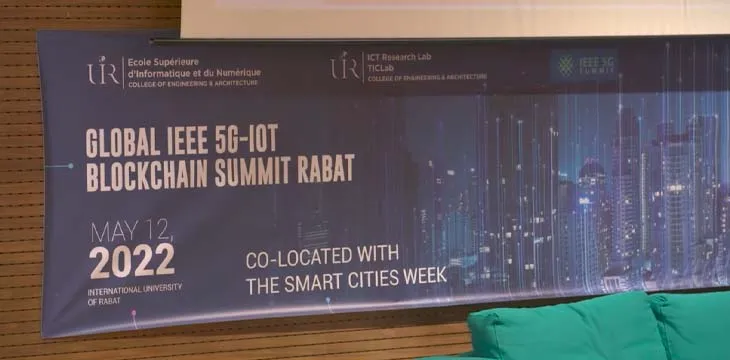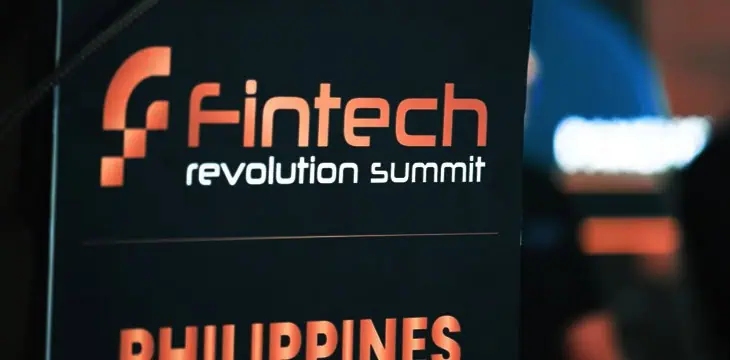|
Getting your Trinity Audio player ready...
|
https://www.youtube.com/watch?v=6j0yESuI96c
With the emergence of Internet of Things (IoT) and the meteoric rise of connected devices comes the requirement for an updated, improved Internet protocol. Moving toward this futuristic model of the Internet is exactly what the team behind the Global IEEE 5G-IoT Blockchain Summit at the International University of Rabat, Morocco wanted to address last May 12.
In an effort to inspire and educate University of Rabat students, experts in blockchain and 5G technology participated in the Summit both in-person and virtually, sharing their knowledge in how to deploy a global 5G ecosystem.
In-person speakers included Jimmy Nguyen, Founding President of the BSV Blockchain Association, Prof. Latif Ladid, Founder and President of the IPv6 Forum, and none other than Dr. Craig Wright, Chief Scientist of nChain.
“It gives us an immense pleasure to host this high-level IEEE event on blockchain here at the International University of Rabat, Morocco,” shared Prof. Mounir Ghogho, IEEE Fellow and event organizer.
“We have an outstanding line-up of speakers. There are a lot of interactions between students and teachers and avenues for collaboration have been identified, particularly with BSV. We look forward to working together with BSV on projects with high societal impact,” he said.
In his keynote speech, Nguyen said he was thrilled to have the opportunity to talk on why Bitcoin SV is the original Bitcoin that fulfills Satoshi’s vision and more importantly, what this means for the Internet and IPv6.
“We view Bitcoin as a really unique phenomenon, the fusion of data and money into one. It’s right there in the term bit—data, coin—money. To do so efficiently and what BSV is, is the distributed data plumbing for the world that will carry out that vision, not just for monetary payments and as we’ll learn today, powering an entirely new distributed data network,” Nguyen said.
Dr. Wright also delivered a keynote speech and caught up with CoinGeek once he was finished fielding questions and taking pictures with the students.
Looking back toward the end of last year, Ladid contacted Dr. Wright shortly after the Kleiman v Wright trial in Miami concluded, wishing to communicate with Dr. Wright about how Bitcoin can power IPv6. To Ladid’s surprise, Dr. Wright replied immediately, the beginning of what has now developed into a fruitful partnership.
“I was very pleased to meet some cool people that have been doing this work for a while and know they are going to be on the front page because they are working on something which is very big. It’s bigger than the wireless internet revolution. They will be the blockchain internet revolution,” Ladid said of Dr. Wright and his associates.
In addition to the high-quality presentations, we were all inspired by the quality of the questions coming in from the students, a reflection of their interest in the technology and the importance of having the best speakers available to educate.
“It’s wonderful to see their curiosity and they are very much at the top of the knowledge. The questions we got today on blockchain where surprising, they are challenging us on all type of protocols, on speed, latency. So top knowledge here, very good,” shared Hakan Yuksel, CEO of nChain and conference attendee.
“We need that new generation because actually truth must be said, decision maker position, all the policymakers, still need to be very much taught what the technology can bring to society. But these guys—this young lady, this young man—will be helping their own nation to move forward,” he pointed out.
Ghogho echoed Yuksel’s sentiments and confirmed that the students are indeed excited about this new technology and studying in areas such as cyber security and blockchain in general.
“What I like about these speeches was to see blockchain as not just as a way of speculating, but really as a way of doing micropayments and to help society and so on. That was great. And our students are really sensitive to this kind of societal issues,” Ghogho said of Dr. Wright, Ladid’s and Nguyen’s presentations.
CoinGeek spoke with the event’s afternoon moderator and Chair of the IEEE Morocco Blockchain Group, Dr. Mohamed Essaaidi, at the conclusion of the event—the first event of his group—and its clear he was delighted with the outcome.
“Through the IEEE, it’s a huge network. So that gives us access to all kind of groups of expertise in different parts of the world. And this event today is, I would say, is an eloquent example for what we can be achieved through this network,” he told CoinGeek.
To get an idea of what exactly can be achieved via such tech, during his speech, Dr. Wright shared some of his visions for the future.
“I see a world where we get to around 10 billion transactions a second and we’re talking about Internet of Things, 100 million devices by the end of this decade, all needing to interact and talk as well as people. Then what we’re doing is a thousandth of a cent, but we’re doing that every second. We’re doing it 10 billion times a second. Now, think about that. That now becomes 100,000 million—millions of dollars a second—continuously. That’s a large industry,” Dr. Wright said.

 07-18-2025
07-18-2025 





